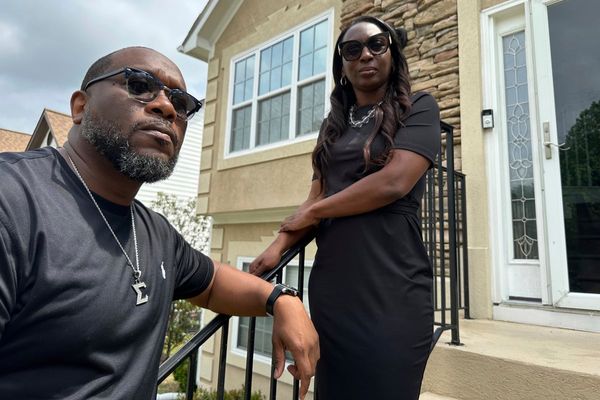
Veterans Day represents an important point of national reflection and a time to recognize the service of all the veterans of our nation’s armed forces. But we should also consider how to truly empower veterans and maximize the talent they bring to companies, organizations, and communities across the nation. With national unemployment rates at historically low levels, veteran unemployment is now even lower, dropping to 2.8% last month. But it’s hard to take a victory lap just yet. Today, the difficulty of military-to-civilian transitions persists in the form of underemployment.
Almost half of veterans and military families describe their transition from military service as either “difficult” or “very difficult.” This number has remained constant for the past decade. Moreover, recent studies have identified that “there is limited evidence” that the “vast and fragmented” array of federal transition support programs are effective. The research is unequivocal: Despite historically low veteran unemployment numbers, “it is too early to simply declare ‘mission accomplished’ on veteran employment.”
Studies conducted by Penn State’s Clearinghouse for Military Family Readiness and LinkedIn indicate that over 60% of veterans are underemployed—working in situations where their experience, skills, and education are not commensurate with their role. Moreover, as the LinkedIn report suggests, “this disparity reveals what many veterans feel: a systemic undervaluation of military experience in the corporate world.”
Consider that for a moment. The same Americans who have served with such distinction abroad experience significant challenges connecting with professional opportunities that allow them to operate at their most productive and fulfilled back home.
In the not-so-distant past, a potent combination of public-private partnerships proved instrumental in improving the lives of veterans while simultaneously altering the narrative about what these remarkable men and women can do after they leave uniformed service.
In 2011, national unemployment rates hovered around 9% while unemployment rates for post-9/11 veterans exceeded 12%. For younger veterans aged 18 to 24, the unemployment rate approached a staggering 30%.
Importantly, a combination of companies, academic institutions, non-profit organizations, and political leaders directly addressed what had grown into an urgent and inexcusable problem. Corporations, led by Jamie Dimon of JP Morgan Chase and joined by key executives who were also veterans, such as Alan B. Miller of Universal Health Services, addressed the problem directly, pledging to hire 100,000 veterans by 2020. The mission subsequently grew to over 300 companies that have hired over 900,000 veterans and military spouses. Similarly, the U.S. Chamber of Commerce Foundation launched its Hiring our Heroes program (of which I am an alumnus) that furthered corporate America’s dedication to hiring veterans.
Higher education also entered the fray, building centers and institutes designed to research and deliver programs to empower veterans and connect them to real opportunities. Syracuse University’s Institute for Veterans and Military Families led this effort, and they have been subsequently joined by institutions such as Columbia University’s Center for Veteran Transition and Integration, Penn State’s Clearinghouse for Military Family Readiness, and William & Mary’s Veteran-to-Executive Transition (VET) program. Political leaders also contributed to the solution, including President Barack Obama’s “Joining Forces” initiative and the passage of the Veterans Opportunity to Work/Hire Heroes Act (the VOW Act).
The collaborative efforts within this public-private partnership effectively shared information, established specific goals, conducted research, developed programs, and passed legislation that made a difference. In the years since, the employment situation of veterans has significantly improved.
That said, much work remains to be done. We can do far more than just thank veterans for their service—we can commit to developing a similarly collaborative array of public-private partnerships focused on empowering veterans and addressing underemployment.
Institutions of higher education can help standardize the definition of what underemployment means for veterans, research both causal and associated risk factors, and design appropriate programmatic interventions. Non-profit organizations can collect data to inform research and drive focused change. And leading corporations can continue to commit their leadership efforts to address this challenge. Such collaboration can inform policy and provide collaborative programs that empower transitioning service members and veterans as they search for a new chapter of service.
If we focus on collaborative ways to empower veterans as they seek to maximize their productivity and resilience in new chapters of service, we can go beyond the bare minimum of ensuring they can still earn a paycheck. Instead, we should look to fully employ the remarkable talent that has already served our republic in profound ways and offer fulfillment, advancement, and professional pride into a coveted compensation package that goes beyond dollars.
Doing so would dramatically improve the transition outcomes for our service members. Our communities—and our country—will be better for it.
More must-read commentary published by Fortune:
- Former Intel CEO Craig Barrett: Splitting up America’s leading chipmaker is a bad idea
- Americans paid $100B since 2008 to access their own money. I am petitioning the Fed to end this racket
- British fintech founder who moved to U.S.: U.K. tech’s problem isn’t taxes—it’s ambition
- As activist Starboard engages constructively, here’s a potent prescription for Pfizer’s future success under Dr. Bourla’s watch
The opinions expressed in Fortune.com commentary pieces are solely the views of their authors and do not necessarily reflect the opinions and beliefs of Fortune.







